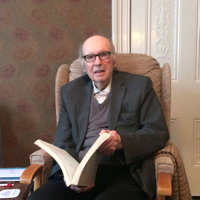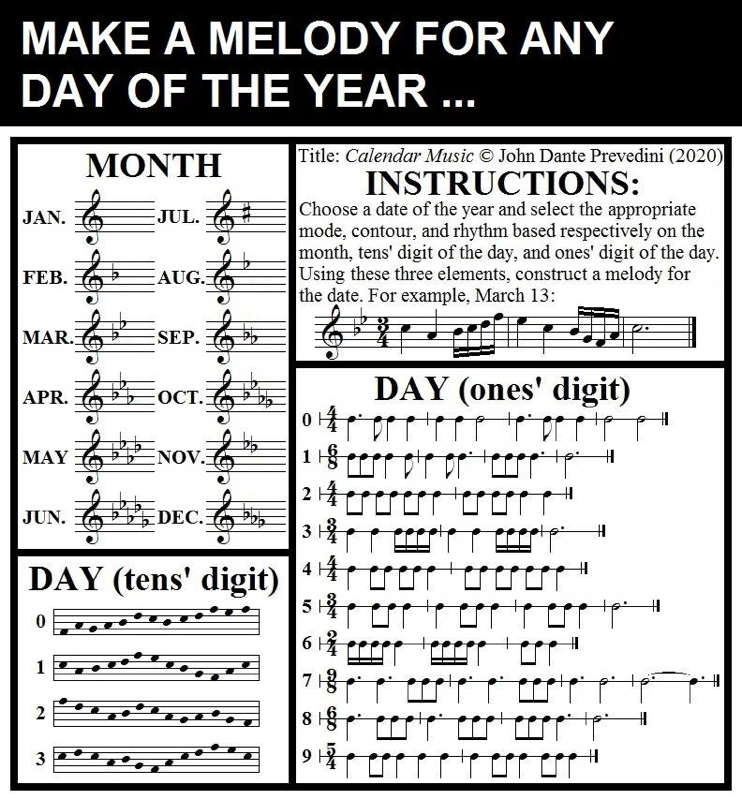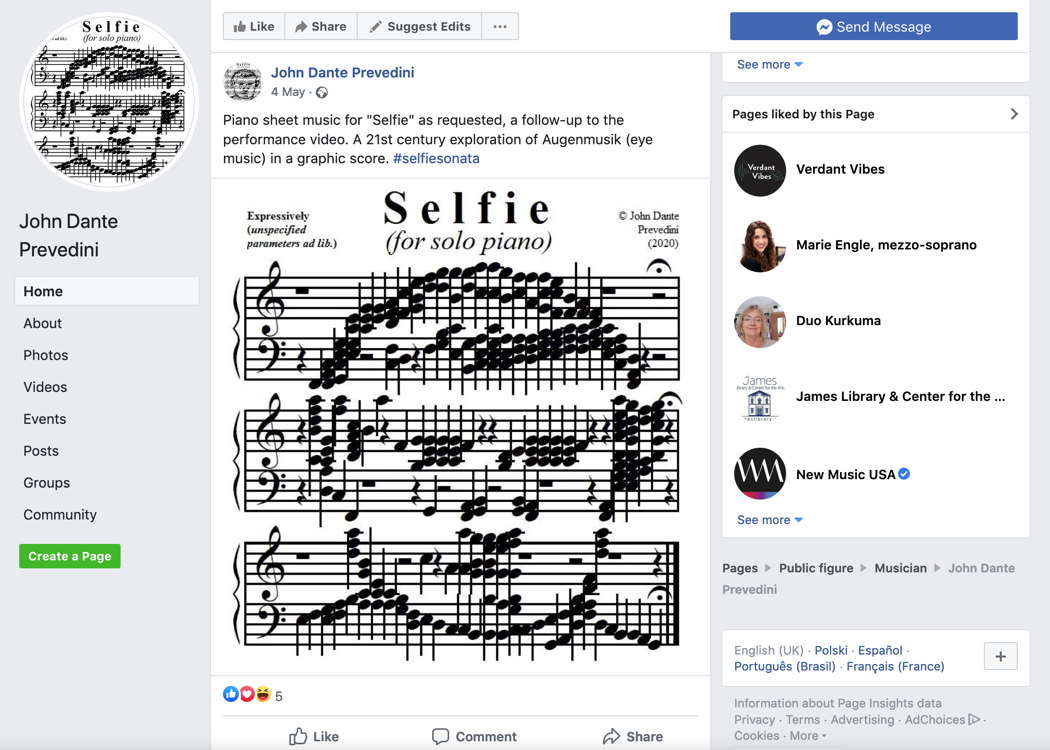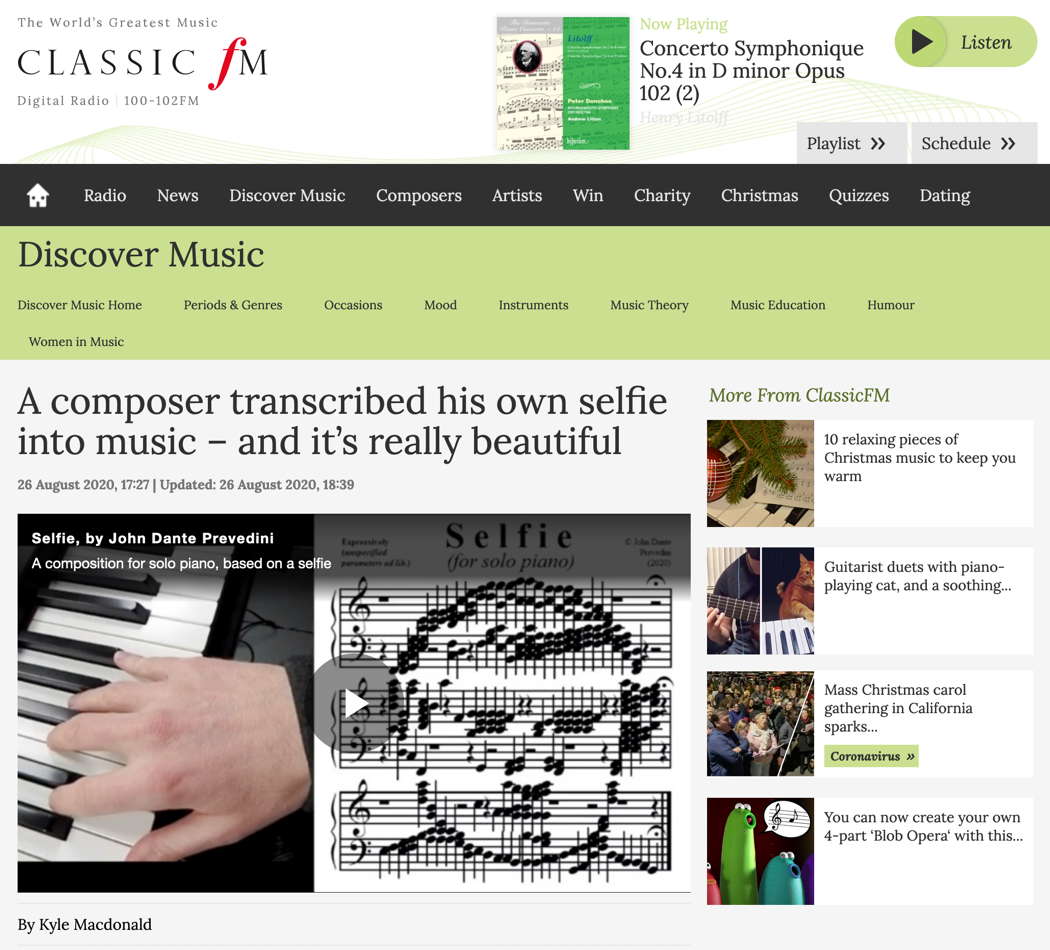- United Kingdom
- Alice Josephine Pons
- trombone
- organists
- Peter Dale
- piano concertos
- Prima Classic
- Francesco Cilea
 DISCUSSION: What is a work? John Dante Prevedini leads a discussion about The performing artist as co-creator, including contributions from Halida Dinova, Yekaterina Lebedeva, Béla Hartmann, David Arditti and Stephen Francis Vasta.
DISCUSSION: What is a work? John Dante Prevedini leads a discussion about The performing artist as co-creator, including contributions from Halida Dinova, Yekaterina Lebedeva, Béla Hartmann, David Arditti and Stephen Francis Vasta.
 SPONSORED: Profile. A Gold Mine - Roderic Dunnett visits Birmingham to talk to John Joubert.
SPONSORED: Profile. A Gold Mine - Roderic Dunnett visits Birmingham to talk to John Joubert.
All sponsored features >>
HOW AUDIENCES SEE THE WORLD

Reinventing music for social media during the COVID-19 pandemic, by JOHN DANTE PREVEDINI
As performance venues remain closed amidst the pandemic, many composers are forced to rely on social media to find their audiences. In this essay, I want to share some of the ways in which I've confronted this challenge and what I learned from the experience of being suddenly thrown into the limelight as a result.
Social media is a place for seeing, not hearing.
It has, by now, become almost common knowledge that the world of social media is primarily a visual one, not an auditory one. Vast quantities of information are produced and consumed online every day, and not all information formats are equally effective at piercing through this fog of data. The saying 'a picture's worth a thousand words' is not without reason, as images often convey content much more quickly than words or sounds do. The result is a social media usage landscape dominated mostly by visual platforms like Instagram, YouTube, and TikTok rather than auditory ones like SoundCloud. It's an ideal world for photography, tweets, emoji, hashtags, memes, and music videos by artists we already know and follow.
But what about music by new artists? How easily can new composers, for instance, find audiences on social media when even discovering their music requires sustained auditory attention? If a group of social media users can either spend four minutes to hear an unfamiliar piece of music or spend ten seconds to see an unfamiliar photo, how many will choose the music? Such concerns underpin the frustration expressed by composers I know who struggle to cultivate new audiences online, especially now in the age of COVID-19 when that is the only way most artists can reach anyone at all.
Stuck in lockdown, I tried an experiment.
In March 2020, just as performance venues started shutting down in the United States, I decided to go back to the basics. I asked myself, 'What are the essential elements of Facebook posts that resonate with people?' A thorough survey of my news feed gradually revealed two general traits of posts that resonate:
- the format is primarily visual, and
- the content is immediately both obvious and relatable.
Then I asked myself, 'How can I make musical compositions do that?'
I thought back to the score. I realized that the score could be both the foundation of the composition and a visual means of presentation. I focused on writing sonically cohesive pieces where the musical concept would be instantly visible in a single-page score. The score itself would then be the audience's introduction to the piece.
I wrote a piece called Calendar Music, a composition in which the melody has a different version for every single day of the year based on parameters displayed in a chart.

Calendar Music by John Dante Prevedini
I also wrote a piece called Music Without Sound, No 1, a graphic score composition in which rhythm and form are conveyed in a sequence of physical sensations imagined by the reader. Another piece I called Selfie, a solo piano composition in which I transcribed an image of my face into grand staff notation. As the months of 2020 passed by, I composed more of these pieces and started sharing the single-page scores as part of the regular feed of my Facebook music page.

The piano score for Selfie on John Dante Prevedini's Facebook page
Here's what happened.
I immediately saw a massive increase in engagement and reach, and my page's five-year follower base nearly doubled within a few short months. While my traditional content (demo videos of non-visual music) would normally reach about a hundred people per post, the new posts started reaching thousands.
To illustrate this with actual numbers, I compared the analytics of twenty-nine music-related posts I had released between September 2018 and September 2020. Of these, twelve were traditionally-conceived 'sound-only' pieces and seventeen were the new visual pieces from 2020. I then compared these two types of posts in terms of Facebook's 'engagement rate', a metric that calculates total engagement - likes, comments and shares - per view. What I found was that the average engagement rate for the traditional posts was 21.3% while the same metric for the single-page visual scores was 35.7%, suggesting that viewers are almost twice as likely to engage with a single-page visual score compared with a traditionally formatted music post.
Beyond increasing these figures, however, the new posts started generating a genuine discussion in the classical music community. On 26 August, the UK radio station Classic FM published a feature article about my piece Selfie on their website, including links to a recording and the score.

Classic FM's article about John Dante Prevedini's Selfie
Classic FM is followed on Facebook by over three million people. How did readers respond? The Selfie feature was reposted on Facebook over two thousand times within the first twenty-four hours, with sharers ranging from schoolteachers and college music departments to radio stations, state opera houses and major symphony orchestras. The piece also proved capable of transcending language and geography, equally reaching all corners of the globe from Latin America to the Middle East and China. I instantly started getting fan mail, invitations for interviews and requests to write custom selfie pieces for people. People were even uploading the score as their personal profile pictures. The response was overwhelming, enthusiastic and remarkably positive.
The reason I mention all of this is not to congratulate myself, but to offer this unlikely story as a testament to the power of music reimagined for social media. I say it's unlikely because, as we know, the usual pathways to 'visibility' are unavailable for a composer in 2020. According to conventional wisdom, the sudden buzz surrounding Selfie and other pieces like it should not have happened. But yet, in this age of social media these pieces have vastly outperformed even my best-received works within the standard conservatory tradition, including a national award-winning piano quartet.
Listen — John Dante Prevedini: Downstream for piano quartet (opening)
The Avery Ensemble at New York's 2018 Tribeca New Music Festival :
These experiences have taught me that if composers today want to reach people, they cannot ignore the ways in which social media shapes sensory attention, especially now during the pandemic. In my own experiments reinventing music for social media, I have found that the single-page visual score has made a world of difference in meaningfully connecting and resonating with new audiences. It's an approach to music composition and dissemination that I therefore encourage other composers to try for themselves with their own creative voices. After all, how better can we meet audiences where they are than by examining how they literally see the world?
Connecticut, USA

JOHN DANTE PREVEDINI'S FACEBOOK PAGE
FURTHER ARTICLES ABOUT CONTEMPORARY CLASSICAL MUSIC

